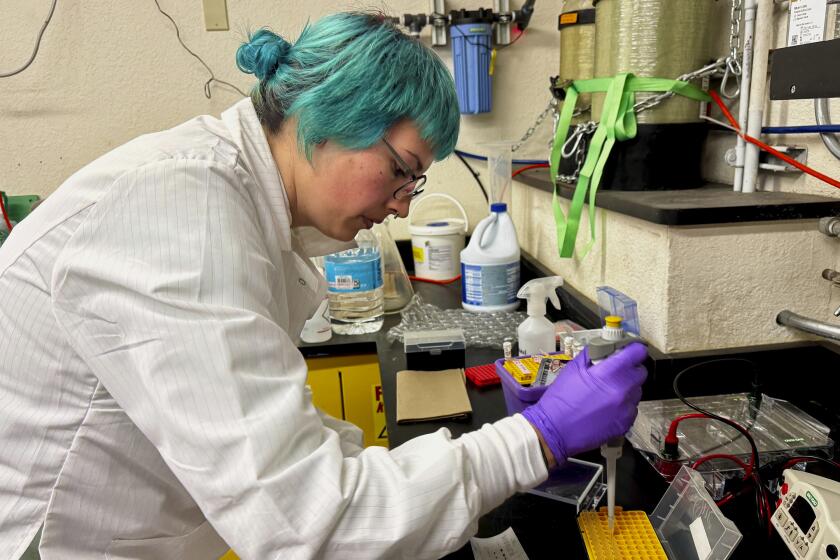Board Revises Curriculum for Teaching of Math in Conejo Valley Schools : Education: The changes will require district’s high school students to solve more complex word problems and explain how they arrived at their answers.
- Share via
Starting this fall, high school students in the Conejo Valley will no longer study math in the traditional sequence: algebra, geometry and Algebra II.
Instead, they will take classes that weave together all three subjects, gradually growing more difficult with each grade.
Adopted Thursday by the Conejo Valley Unified School District board, the change is part of the district’s new guidelines for teaching math. The framework, a more conservative version of the state’s new math curriculum, also will require students to solve more complex word problems and explain how they arrived at their answers.
While the state’s decade-long effort at math reform has drawn criticism in some parts of the state, it has been met with much less resistance in Thousand Oaks.
The reason, Assistant Supt. Richard Simpson said, is because the principles behind the new curriculum--introduced by the state in 1984--have been gradually embraced by the Conejo Valley district in recent years.
“For districts that did nothing, it’s a major change,” Simpson said. “For districts that implemented the 1984 framework, there are subtle changes.”
At Thursday’s board meeting, trustees voted 3 to 1 to adopt a version of the state curriculum hammered out by a committee of teachers and administrators during the past year. Board member Elaine McKearn abstained.
“We put out good kids and make good scores, I don’t see this as anything to be ashamed of . . . on the contrary, we are moving forward,” board member Richard Newman said.
But Mildred Lynch, the only board member who dissented, said she opposed the philosophy behind the new curriculum. She said the state’s curriculum was less than adequate for teaching math and that teachers were divided over the issue.
“I don’t mind telling (students) there’s more than one way to work a problem, but I do object to telling them there’s more than one answer,” Lynch said.
Board Chairwoman Dorothy Beaubien said a question-and-answer session with the district’s math teachers convinced her that essential skills--addition, subtraction, division and multiplication--will not be short-changed.
“We’re going to have a definite emphasis on basic skills,” she said.
The district, she said, cannot afford to fall behind the times.
“I have some mixed feelings myself on it,” Beaubien said. “But as I say, you have to go along with it. In the long run, I think it probably will be for the best.”
Simpson said the district decided to restructure high school math classes to better prepare students for jobs that require complex math skills.
“If you talk to the scientists at Rockwell or Amgen, they use all the elements of math simultaneously for the kinds of problems they have to solve,” he said.
District officials hope the changes will prepare more students to take calculus in their senior year by giving them more consistent exposure to algebra and geometry.
In all grades, the program will require students to solve more complex word problems, defend their answers and apply lessons to new types of problems.
Still, there are some parts of the state’s new curriculum that the Conejo Valley district has rejected.
While the state suggests placing pupils of all abilities together, the Conejo Valley district will still maintain separate classes for exceptional students.
And overall, Simpson said, the state framework strives to be “student-driven,” suggesting that pupils be asked if they prefer working in groups or individually.
But in Thousand Oaks, administrators believe teachers should make that decision.
“We still believe in a teacher-driven approach,” Simpson said.
More to Read
Sign up for Essential California
The most important California stories and recommendations in your inbox every morning.
You may occasionally receive promotional content from the Los Angeles Times.










